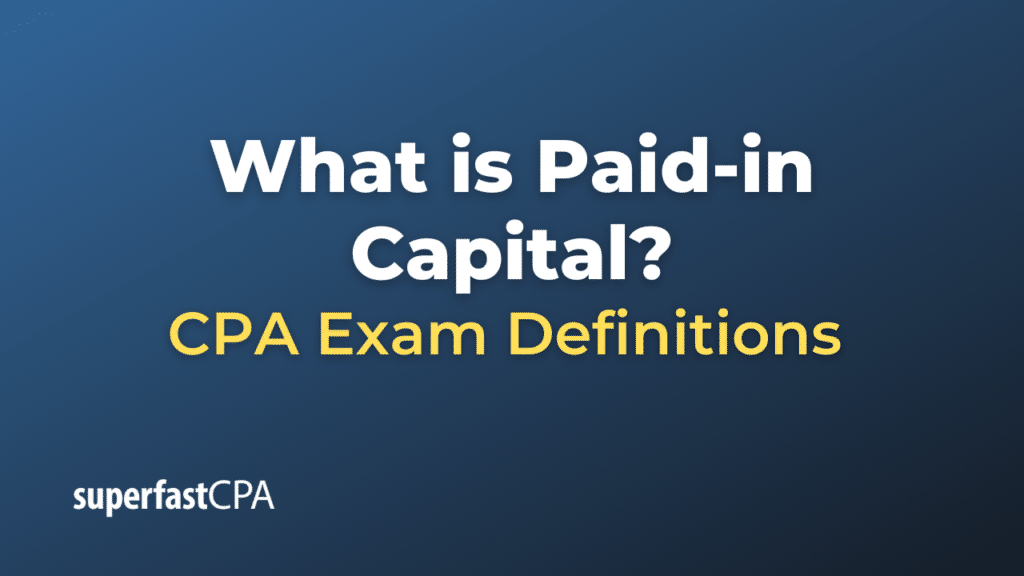Paid-in Capital
Paid-in capital, also known as contributed capital, represents the amount of money that shareholders have invested directly into the company. This generally occurs when a company sells its shares to investors.
Paid-in capital is a component of shareholders’ equity, which appears on a company’s balance sheet. Shareholders’ equity represents the residual interest in a company’s assets after subtracting its liabilities. It’s calculated as follows:
Assets – Liabilities = Shareholders’ Equity
The equity section is typically divided into:
- Paid-in Capital : The money invested by shareholders when they purchase shares directly from the company. This includes the par value of the shares (the nominal value assigned to the shares when they are issued) and additional paid-in capital (the excess of the amount paid by shareholders over the par value).
- Retained Earnings: The cumulative earnings that a company has earned since its inception that haven’t been distributed as dividends.
For example, if a company issues shares with a par value of $1 per share, and an investor buys 1,000 shares for $10 each, the total paid-in capital would be $10,000, divided into $1,000 (the par value of the shares) and $9,000 (the additional paid-in capital).
Paid-in capital is an important part of a company’s financing. It’s money that the company can use to fund its operations, make investments, pay down debt, etc., without having to borrow or generate profits.
Example of Paid-in Capital
Suppose a startup tech company, TechStart Co., decides to issue shares to raise capital for its operations. The company issues 100,000 shares with a par value of $1 per share, but each share is sold for $10 (the additional price investors are willing to pay is due to the expected growth potential of the company).
Here’s how the paid-in capital would be calculated:
- Par Value: The par value of the shares is $1 per share. As TechStart Co. has issued 100,000 shares, the total par value is $1 * 100,000 = $100,000.
- Additional Paid-In Capital: Each share was sold for $10, so the total amount received from the share sale is $10 * 100,000 = $1,000,000. However, $100,000 of this amount is the par value, so the additional paid-in capital is $1,000,000 – $100,000 = $900,000.
Therefore, TechStart Co.’s total paid-in capital is $100,000 (par value) + $900,000 (additional paid-in capital) = $1,000,000. This will be recorded under the shareholders’ equity section on the company’s balance sheet.
This $1,000,000 of paid-in capital is money that TechStart Co. can use to fund its operations and growth, without needing to borrow or generate profits. The company has essentially funded itself by selling ownership stakes to investors, who have contributed this capital with the expectation that the company will grow and provide them with a return on their investment.













